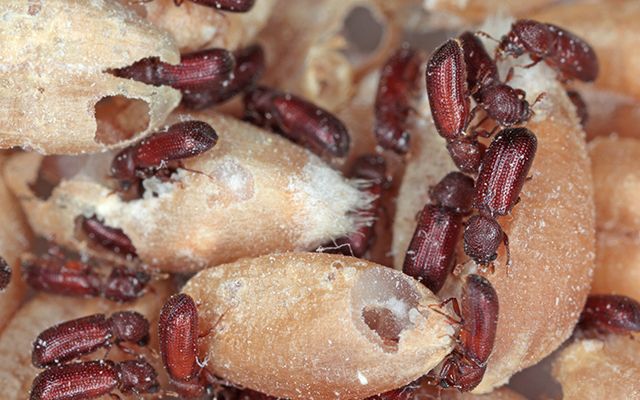
Insect pest infestation (moths, beetles, weevils etc.) is a major problem in the storage, processing and marketing of cereals such as rice, corn, buckwheat, sorghum, etc.
Typically, chemical fumigants X methyl bromide) are – or were – used for postharvest pest control but regulatory issues, environmental concerns, potential health hazards, reduced acceptance by consumers and the increase of the organic market have pressed the industry to develop non-chemical treatment alternatives. Such alternative methods include: ionising radiation (effective but requiring substantial investment to establish irradiation facilities and protection systems; additionally there is great public concern over the use of ionising radiation in the food chain), controlled atmosphere treatments (not applicable to all commodities and requiring long treatment times), cold treatments (applicable in some cases but lengthy and very expensive) and heat treatments.
Various heat treatment techniques, alone or in combination with cold or controlled storage conditions, have been investigated.
Conventional heating methods use forced hot air (sometimes in combination with steam) or hot water to bring pests temperature to a lethal level. Conventional heating is simple and easy to control, however it is an intrinsically slow process and it is well known that prolonged heating can be detrimental to quality of food products. Actually, in many cases it has been found that an effective pest control process by conventional heating is incompatible with the commodity’s final quality in terms of physical, chemical and nutritional characteristics.
Direct heating methods by electromagnetic waves, instead, allow for rapid and uniform sanitisation of many agricultural commodities. Unlike conventional thermal techniques, where heat is transferred to the product through its surface from an external heat source by conduction, convection or irradiation, a Radio Frequency field generates heat directly inside the entire product mass. In this way, pests are heated rapidly (generally to 55-70° C in 3-5 min), ensuring the complete mortality of adult insects and larvae, along with a TCB reduction, in just a few minutes.
RF sanitisation is organic (chemicals-free) and the process cost is low, thanks to the short residence time and the low power consumption.
Stalam has introduced SANICROP+, a RF equipment especially designed for the large-scale disinfestation of dry agricultural commodities. Read more…

